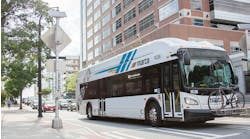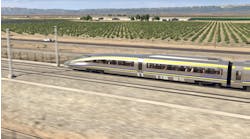On May 12, 2016, ZF honored ten outstanding inventions by employees spanning a wide range of products, processes and mobility sectors with its internal ‘Graf-von-Soden Invention Award’. The jury faced a tougher selection process than usual due to the two new divisions (the ZF TRW and E-Mobility divisions) as well as the immense number of patents generated by inventive ZF employees in 2015. In total, 1,036 new patents were registered last year - an increase of 14% compared to the previous year. One of the greatest motivations for inventing a new technology or process was the desire to further enhance safety and security for people, functions or processes.
“The power of innovation among our employees is a key driver of our company’s progress and is deeply rooted within our company culture - which is very much alive”, says Dr. Stefan Sommer, ZF Chief Executive Officer. “It is therefore all the more important for us to honor and promote employee efforts and achievements in this area”. The Graf-von-Soden Invention Award has become an established benchmark for innovation. It is presented annually and was named after Alfred Graf von Soden-Fraunhofen (1875 – 1944), co-founder, first managing director and later member of the Board of Management of ZF. In 2016, the year which marks the fourth anniversary of the award, the focus was on ten new outstanding inventions by ZF employees. One of them was in the area of Corporate Research & Development and the nine other contributions originated from the Group's divisions. The number of divisions has increased from four to six since the last award ceremony in 2015. First, the former U.S. company TRW Automotive was integrated as the Active & Passive Safety Technology Division and then, the E-Mobility Division was founded. The addition of both divisions has further widened the range of inventions and the sheer number of inventions has now reached an impressive number. In total, the company registered 1,036 new patents in 2015. The ten award-winning inventions are as follows:
- The quality of an automatic transmission depends on how the gears interact internally, so the Car Powertrain Technology Division developed a new smoothing fixture and method for smoothing the gearing of the individual gears. This invention has been completely integrated into the production line and now optimizes the surface of the ring gear spline, which minimizes wear on the planetary gears in mesh. As a result, automatic transmissions by ZF such as the 8HP and the 9HP have a longer service life while offering optimal acoustics.
- The Car Chassis Technology Division created a vibration-frequency-dependent, passive damping system, which makes it possible to increase driver comfort in a purely mechanical and cost-efficient way. A specially designed damping valve setup allows the vehicle body to "float" over cobblestones, almost without being affected by the uneven surface.
- If commercial vehicles get stuck in holes or on slippery surfaces, the driver needs to be able to initiate ‘rock-free maneuvers’. ZF's Commercial Vehicle Technology Division has developed an automated system to assist the driver. A software automatically detects situations which require rock-free maneuvers and the driver can select the level of automation for freeing the vehicle – on request, the vehicle can free itself independently.
- In electric vehicle drive systems, power electronics play an essential role and high-current printed circuit boards belong to this category. They have several layers and fulfill four tasks: they carry currents and are responsible for control, current distribution and switching. The ZF E-Mobility Division has invented a new distribution, and in particular, an advanced electromagnetic screening and decoupling of the layers which make it impossible for the individual functions to influence each other inadvertently – a common issue to date.
- ZF's Industrial Technology Division has developed a new system for propellers of large watercraft. Specifically, the new invention is a rotary unit integrated into the transmission which also continuously drives the ship screw propeller when the main engine is switched off. This prevents transmission corrosion damage and keeps the propeller from freezing or becoming overgrown. In addition, this system makes it possible to turn the propeller to the respectively optimal position for maintenance work. The locking mechanism for the ship screw propeller – which has also been integrated – increases safety.
With as many as four innovations, the Active & Passive Safety Technology Division holds a strong position: (6) A new telescopic steering system assembly arrangement consisting of three parts is an outstanding process engineering achievement which generates high performance advantages. (7) A completely different method is used in heated steering wheel production whereby electric conductors such as heating wires are inserted in parallel with the production step of cutting the foam layer which is required to insert the heating wires in the first place. The production tools required for this operation are also part of the invention. (8) Improved differentiating algorithms in an occupant restraint system make it possible to activate the system faster and more intelligently than before. (9) An integrated multi-stage transmission unit with two additional intermediate gears increases the power of an electric park brake actuator to such an extent that heavy goods vehicles will also benefit in the future.
(10) Corporate Research and Development also received a Graf-von-Soden Invention Award for an innovation in the area of safety. Thanks to this invention, polyphase electric motors which are used more frequently in vehicle drive and steering systems now also remain functional in emergencies. If one phase fails completely, the control electronics modify the remaining phases to maintain a part of the drive power or steering power assistance.




